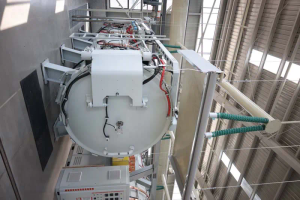Under the five major trends, the three directions of the development of medical -grade electronic components
At least at the current stage, the main force of promoting the development of smart medical treatment is information technology. From the perspective of information technology, especially electronic semiconductor technology, what are the directions of current smart medical (or digital medical)?
Medical and health is a large market. According to the data of the market research institution FROST & Sullivan, the global medical care industry revenue reached 2 trillion US dollars in 2020, and the future growth rate is also very happy. Big water raising big fish, global medical equipment has hundreds of billions of dollars, and the domestic market has reached hundreds of billions of yuan. Although not all equipment is related to electronics, new medical schemes represented by digital medical care are the growth of medical equipment market growth. The main driving force, the most shiny of which is wearable device and the medical Internet of Things. According to the data of Juniper Research, by 2023, the medical wearable device market will reach $ 60 billion. It is estimated that the global medical Internet of Things market will reach US $ 136.8 billion.
Digital medical (or intelligent medical treatment) is reinstalizing the structure of the medical and health industry, and in the context of continuous innovation in information technology, the significance of digital medical treatment itself is constantly being subverted. From the early electronic prescriptions, digital cases, medical cooperation platforms, to smart medical and remote diagnosis based on artificial intelligence and network communication technology, combined with the currently most advanced sensor, artificial intelligence technology and sports control technology It is also gradually practical, and personal precision medical care based on big data will become more and more common.
Five trends of smart medical care
According to the analysis of the consulting company McKinsey, the development of global smart medical care reflects the five major trends.
Trend 1, full cycle health management. Consumer demand is extending from “medical” to “health”, and it needs to include full -cycle services such as health management, healthy life, disease prevention and rehabilitation care. Taking Singapore as an example, the government has established the Health Promotion Board to encourage residents to develop healthy living habits through publicity of evidence -based medicine and disease prevention knowledge, thereby reducing the risk of disease incidence and progress. In addition, the Singapore Health Promotion Bureau also focuses on promoting the nursing path of patients with non -medical institutions to reduce the number of diagnosis of residential hospitals.
Trend II, high -quality clinical results. Medical errors and excessive medical treatment have caused huge waste of resources. US studies have shown that the outpatient misdiagnosis rate can be as high as 5%, and about 10%of patients die caused by misdiagnosis. The World Health Organization estimates that even in developed countries, 7%of hospitals with medical infections occur each year. Due to excessive medical care, more than $ 210 billion in medical resources in the United States alone. The above data shows that the medical service system urgently needs to improve the quality of diagnosis and treatment, while the hospital needs to be fundamentally changed as the main body of medical services.
Trend III, retail health service. In mature markets, a single hospital providing all services for all patients is being gradually replaced. Hospitals and other medical service providers (such as family doctors, clinics, pharmacies, rehabilitation centers, etc.) are constantly integrated to form an interdependent ecosystem. For example, in the United States, leading retail pharmacies can provide a variety of conventional testing and treatment services. In China, the government is promoting the decentralization of medical services through vigorously developing family doctor services, community health centers and third -party service agencies.
Trend III, active patients participate. Today, patients around the world have more medical knowledge and actively participate in the medical decision -making process. They took the initiative to inquire about information and began to clearly express the treatment and payment plan preferences. At the same time, technological innovation has made new medical models such as online consultation, multidisciplinary diagnosis and treatment, etc., and promotes the development of hospitals to patient -centered operating models.
Trend 5, refined expenditure management. The increasing medical expenditure has made the payer and hospital’s demand for cost control even more urgent. The global major countries have continued to grow: US medical expenditures accounted for more than 17%of GDP; Chinese medical expenditure accounted for about 6%of GDP, and it increased year by year. Many provinces and cities are facing the pressure of medical insurance budgets. The medical systems of various countries are promoting the reform of valuable payment -based payment methods, prompting the medical institutions and the payment party to bear the risks. Essence
McKinsey also pointed out that achieving five major elements of smart medical care, namely cross -institutional interconnection, automated and efficient operation, full -process reshaping experience, big data -driven decision -making, and continuous innovation mechanism.
Among these five major elements are related to electronic information technology. For example, interconnection interconnection requires the establishment of an information system that supports real -time data connection and sharing. This requires the establishment of a unified data standard and structure with the institutions and the organizations. Under the premise of being used reasonably; automated and efficient operations need to use the Internet of Things perception technology to optimize the internal asset management process of the hospital, and support personnel and materials in real time recognition, tracking, and traceability. Electronic technology, whether it is intelligent appointment and upload records, or real -time monitoring and reminders of wearable devices, as well as automatic section, portable examination, medication reminder, and remote follow -up, etc., it must have hardware equipment support to achieve.
http://oaicon.com/index.php/2023/02/27/under-the-five-major-trends-the-three-directions-of-the-development-of-medical-grade-electronic-components/
Of course, McKinsey also pointed out that although information technology is essential, smart hospitals are not just an information project. On the contrary, Smart Hospital is a systematic engineering jointly involved by managers, doctors, nurses, etc., and needs to establish a continuous open cooperation mechanism in order to discover problems faster, propose innovative plans, and pilot and promote solutions in the hospital to improve medical care. Quality and patient experience, optimize clinical processes, and effectively control costs.






